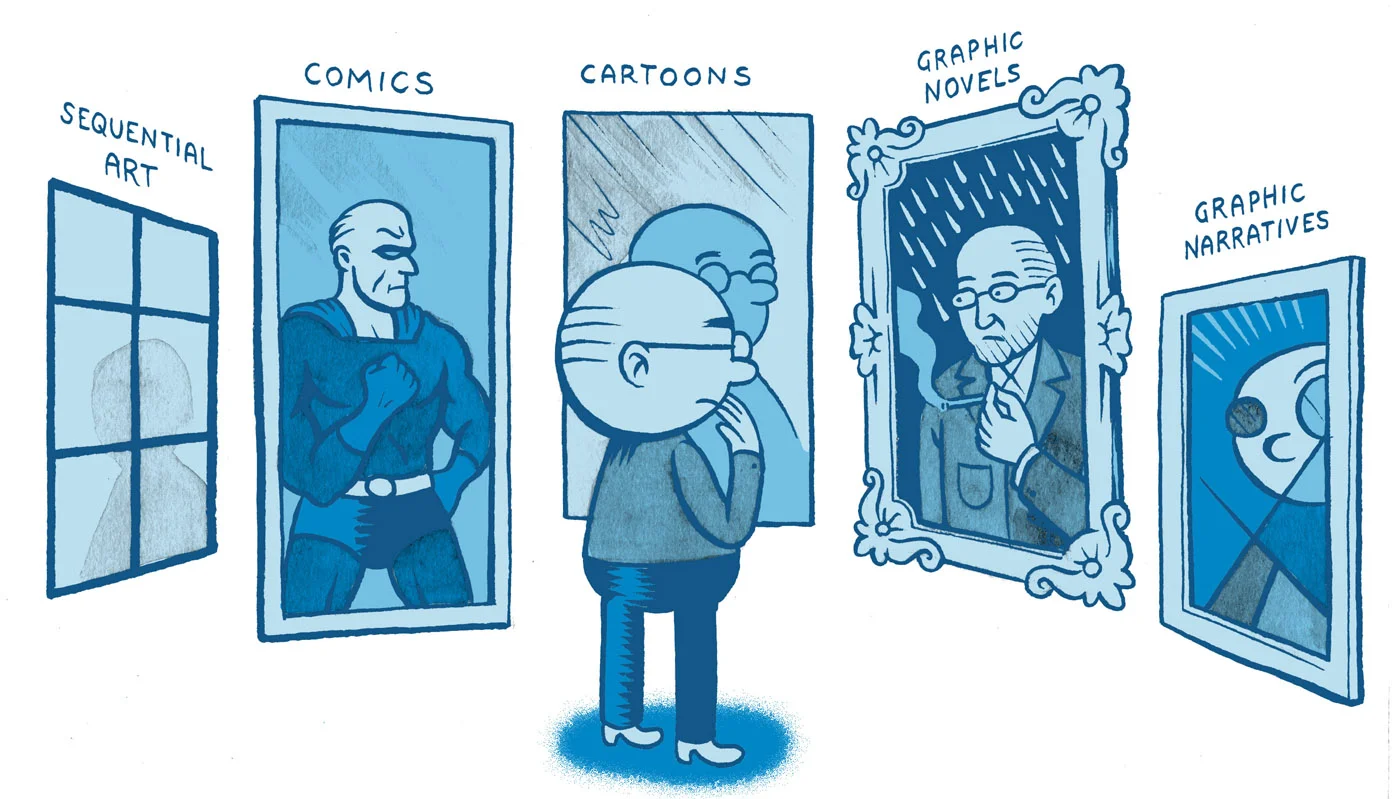Terminology We Live By
/This blog is mainly intended to share publications and events related to my academic work. Occasionally, I will also use it to work out some personal thoughts which have no space in more formal talks and publications. To start off the project I want to briefly discuss 'Cartoon Science' the title I chose for this website.
In the comics community there has been a long and complicated debate on the exact terminology used to define the object of our interest. The terms 'comics', 'cartoons', 'graphic novels', 'graphic narratives' or 'sequential art' (famously adopted by Scott McCloud in Understanding Comics 1993) are sometimes used quite freely and interchangeably to refer to the same medium. However, sometimes they are also used to refer to very different formats (or even different genres) and can elicit very strong reactions in some people. Personally, I have never been a fan of strict definitions - which often tend to complicate interdisciplinary conversations - but as I start to discuss comics in a more theoretical framework I feel the need to justify the terminology I use.
On an ideological level, I often sympathise with a certain pride in using the word ‘comics’, in order to embrace the humble origins of the medium and to refuse to rebrand it (as 'graphic novel') to please a cultural elite. However, I can see how the association between 'comic' and 'funny' in the English language could be an issue, especially when dealing with subjects that are not funny at all (this is less problematic with the French bande desinée or the Italian fumetti). Also, as an author I often prefer to define myself as a 'cartoonist', simply because the term ‘comic artist’ always seemed cumbersome to me (or even pretentious). After all, if you write books you just call yourself a ‘writer’, not a ‘book artist’. Of course, a downside of the term ‘cartoons’ is that it is often meant as single panel cartoons or comic strips. When it comes to the length of the material I understand the need to draw some boundaries, and I should make clear that for the scope of this project I am interested in medium-long form stories. Not because I consider these superior, but simply because for the purpose of science communication I feel like it would be difficult to communicate complex ideas in less than 4 panels. However, I like the ambiguity of ‘cartoons’ when it is applied to 'animations', which of course share many similarities with comics and are often associated in popular culture. This is why in my research I will often use the more technical term 'visual narratives', instead of ‘cartoons’ in order to include other formats such as animations, web comics, video games and similar formats, which are becoming increasingly intertwined in our culture.
However, for the title of the page I decided to stick with 'cartoon' science. Not only because it seems more memorable, but also because I think ‘cartooning’ better summarizes the process of visual simplification which I consider the essential characteristic of comics (or whatever you want to call them). If I really had to choose a definition I would subscribe with the one given by Douglas Wolk in Reading Comics (2007), and best exemplified by authors like Chris Ware and Ivan Brunetti:
When I talk about “drawing” in this book, I usually mean a specific kind of drawing: cartooning. (Artists from the fine-art world who draw are much faster to make the distinction.) The difference is that drawing in the conventional sense is usually supposed to represent real-world beings and objects [...] Cartooning is a whole different game, It chief tools are story and symbolic abstraction; it usually begins and sometimes ends with contour and outline, and it relies on conventions that imply the progression of time. Cartoonists can draw characters who look only vaguely like actual people do, and backgrounds with only the faintest hints or real world complexity, and get away with it - often that’s the idea. The simplifications of cartooning are symbolic even more than they are retinal: there are universally accepted scribbles that stand in for what mouths and noses and motion and sweat look like.
I see a direct connection between this notion and the theories expressed by Lakoff and Johnson in Metaphors We Live By (1980). These authors suggested that metaphors are not simply a figure of speech but a fundamental way through which we understand the world, and I am very interested in exploring how comics - an intrinsically metaphoric medium - may enable us to map abstract scientific concepts onto human-relatable experiences.

